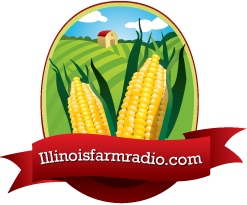As harvest comes to a close, farmers turn their attention to 2017 business planning and possibly upcoming land sales. But are tracts selling for what they’re actually worth, or previously appraised valuations? Understanding your area’s most recent farmland value study and historical trends can help those considering to place the winning bid or sell to the highest bidder.
For more than a decade, land prices throughout the state steadily climbed, reaching unprecedented numbers – with average values peaking at an almost 80 percent increase from 2003.
To understand how land values differ from year-to-year, Farm Credit Illinois (FCI) conducts an annual benchmark farm study evaluating the same 20 farms’ values. The 2014 benchmark study’s overall results marked the beginning of a shift in trends with only a slight increase in land values. The downward trend began in 2015 with an average decrease in value of 1.51 percent.
The most recent benchmark farm study conducted in July 2016 revealed a steady, average decline in land values of 6.34 percent in the central and southern 60 counties of Illinois.
Overall, the 2016 benchmark study showed 16 of the 20 farms evaluated each year declining in value, one benchmark resulting in no change, and three marginally increasing. Results follow trends throughout the Midwest Corn Belt.
The descending trend can be attributed to high row crop yields throughout the top producing countries of the world, resulting in lower commodity prices and contributing to reduced net farm income. As yields are reported throughout the Midwest, it appears the movement will continue into 2017.
In combination with these factors, if the Federal Reserve (Fed) votes to increase the Fed Funds Rate, as it is expected to soon, land values will likely continue moderately decreasing.
Study Reveals Value Reductions Across Land Classes
Illinois’ agriculture real estate is a location-specific asset whose value is determined by its farmland class. A farmland class is calculated using the University of Illinois’ Bulletin 811 Productivity Index table which classifies the soil in terms of a productivity index (PI) rating. Using soil maps, appraisers determine the percentage of soil types present on a farm to find the overall PI rating – the higher the rating, the more productive the farm’s soils. The overall PI rating places farmland into classes from A to C. Within FCI’s benchmark study, all farmland classes are evaluated.
When considering the benchmarks individually, a wide range of percentage changes across the land classes were shown; the year-over-year percentage changes ranged from -15.53 percent to +3.12 percent.
How Land Trends Influence Buying and Selling
These benchmark values reveal current and long term trends and help set expectations for farm families planning to purchase or sell ground. However, regional trends do not define each piece of property. As farmers begin planning for 2017, they should look to a reliable appraisal service and agricultural lender to study local land values.
Understanding the historical sale trends and the productivity index of a piece of land will assist farmers in setting their maximum budget before the auction takes place – an important component to expanding or maintaining any operation.
Kent Reid is Chief Appraiser at Farm Credit Illinois. He was raised in Albion (Edwards County) and earned a bachelor’s degree in finance from Southern Illinois University Carbondale. Contact kreid@farmcreditIL.com with comments or questions.



